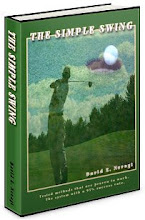
#1 AILSA CRAIG : 354 YARDS, PAR 4
Fairway bunkering is now one Turnberry’s major strengths, as this view of the 1st hole – a relatively
gentle opener at 354 yards – confirms, with new bunkers added at 280 and 300 yards from the tee
======================

#2 MAK SICCAR : 428 YARDS, PAR 4
Running back parallel with the first, the par-four second again requires careful navigation through a
series of traps
==============================

#3 BLAWWEARIE : 489 YARDS, PAR-4
The Championship tee at the 3rd has been extended by 27 yards, turning what was an inviting four into
a tough two-shooter. Swales about the green do, however, feed-in approach shots and so, in favourable
conditions, a genuine birdie chance
========================

#4 WOE-BE-TIDE : 166 YARDS, PAR-3
The first of Turnberry’s four short holes, the 4th is played to a raised plateau green. A classic
one-shotter that remains unchanged. The beach, incidentally, is an integral part of the course
====================

#5 FIN ME OUT 474 YARDS, PAR-4
An old back tee has been brought into play at this swinging right-to-left dogleg, lengthening the hole by 33
yards. Two new bunkers have also been added on the right of the fairway (at 290 and 320 yards), catching
the ‘bail-out’, but the real danger lurks on the green itself, a perilously quick surface that slopes back to
front
========================

#6 TAPPIE TOORIE : 231 YARDS, PAR 3
No changes have been made at the 6th – ‘cos none were needed. At 231 yards, this is a brute of a par
three, with a steep bank awaiting to the right, a string of three traps catching anything left. In the far left of
the photo is the extended tee at the par-five 7th
=============================

#7 ROON THE BEN’ : 538 YARDS, PAR-5
Assuming a good drive across a ridge, those who do make it ‘Roon the Ben’ to find the safety of this 7th
fairway will be thinking in terms of reaching in two. One of only two parfives on the course, this is a hole
that should yield plenty of red figures
====================

#8 GOAT FELL : 454 YARDS, PAR 4
From the 8th, Turnberry begins to bare its teeth. This is a gentle right-to-left dogleg, with fairway bunkers
devilishly placed to catch out anything but a sure-footed tee shot. The green comprises two levels, a back
pin only compounding the complexity of the matter
===================

#9 BRUCE’S CASTLE : 449 YARDS, PAR 4
Following a semi-blind tee shot from a tee that is basically set on a ledge above the rocks, the hog’s back
9th fairway sets up this view of the approach to this par four – and not a bunker in sight!
===============

#10 DINNA FOUTER : 456 YARDS, PAR 4
Turnberry’s unmistakable signature hole, the 10th is one of the world’s great par fours. The Championship
tee has been moved back and now sits (formidably) atop the rocks, demanding a good drive to find the
safety of the fairway, which has been mowed a little closer to the beach. A donut-shaped trap sited in the
fairway 80 yards or so short of the green can play tricks on judging the right club for the shot in
================

#11 MAIDENS : 175 YARDS, PAR 3
The serene beauty of Ailsa at dusk, as lenghtening shadows cross the 11th green, Ailsa Craig silent away in
the distance
===============

#12 MONUMENT : 451 YARDS, PAR 4
A new bunker has been added to the right of the fariway at 320 yards from the tee, but otherwise this hole
remains as was – a tough par four to a slightly raised green that sits in the shadow of the Monument
======================

#13 TICKLY TAP : 410 YARDS, PAR 4
Drive has been made a little tougher with the addition of a new bunker down the left, while a ridge has been
created in the rigth rough. Again, a raised plateau green
===================

#14 RISK-AN-HOPE : 448 YARDS, PAR 4
A tee on the neighbouring Kintyre Course will be used here to give a better view of the fairway at this
straight-away par four
======================

#15 CA CANNY : 206 YARDS, PAR 3
This is a view from the left edge of the green at this magnificent par three, sure to be a pivotal hole come
Sunday – as it was in 1977 when Tom Watson tumbled in an unlikely birdie putt from off the green, well to
the right of this bunker
====================

#16 WEE BURN : 455 YARDS, PAR 4
The 16th hole has been transformed since the Open was last here in 1994. A new tee has been added
and the fairway rerouted, creating a gentle left-to-right dogleg. At 455 yards, the difficulty remains on
negotiating the burn – even more so now as the approach is more across from a left-hand angle.
The new flight of tees at the 17th (extending the par five by some 60 yards) can be seen to the left
=====================

ANGWHANG : 559 YARDS, PAR 5
The realignment of the 16th tee making way for a new flight of tees that have lengthened this hole by 61
yards. It will still be reachable for the bigger hitters, setting up the opportunity of eagle, Nick Price style
============================

#18 DUEL IN THE SUN : 461 YARDS, PAR 4
Perhaps the least picturesque of Turnberry’s Ailsa Course, but a challenging par four that will no doubt
prove the scene of some drama. A new back tee has added 29 yards, and, with a third bunker added to
the left of the drive zone, the difficulty is in threading a tee shot into the narrow neck of fairway





















 What were the main challenges for the preparation of the ’86 and ’94 Opens?
What were the main challenges for the preparation of the ’86 and ’94 Opens?





